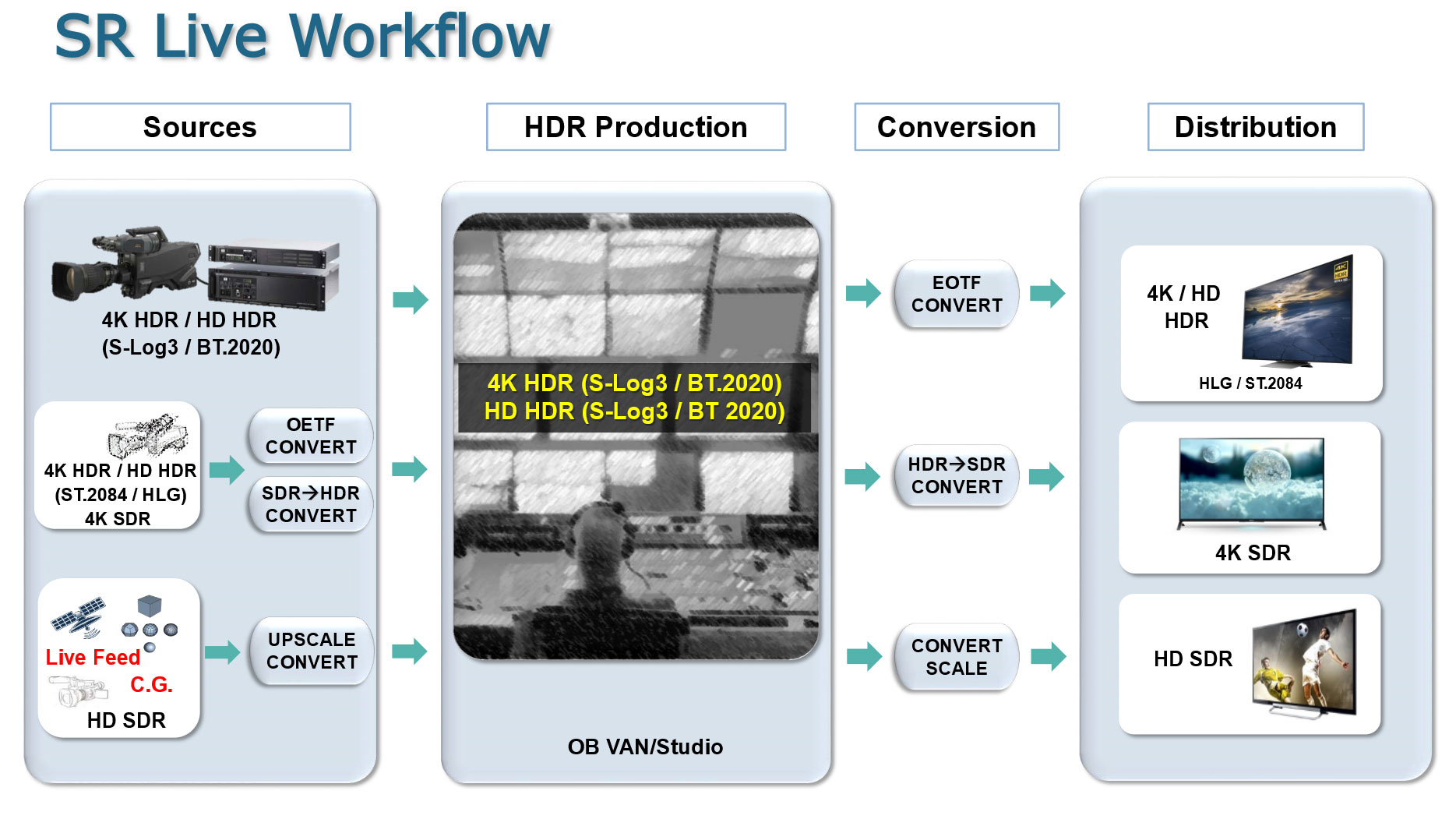HDR will be a major component of Sony’s NAB exhibit, executives said at a pre-NAB press briefing at Sony Electronics New York City headquarters, with a big part of the company’s presence dedicated to promoting its SR Live for HDR workflow for broadcast.
“Part of the failure of 3D in live production is you had to start introducing bespoke equipment for people who were not in the television industry to use [during production],” said Sony Electronics Marketing Manager Rob Willox in describing Sony’s vision for HDR broadcast. “Overall, it wasn’t going to attract enough of an audience to pay for it.”
The difference this time around, Willox said, is that existing camera technology can be used to capture HDR, meaning live production won’t require such an extraordinary, out-of-the-box effort.
Sony’s HDR broadcast strategy is anchored by the HDRC-4000 converter, introduced at IBC last year, which supports 4K HDR, 4K SDR, HD SDR, HLG, 4K SDR and HD SDR. The alphanumeric soup is important because broadcasters have made it clear that they see a clearer ROI path in HD HDR content than in 4K, adding to the format options production hardware must be able to handle.
The idea is to maintain a 4K HDR signal as the master production format, converting the signal to the required HDR or SDR distribution formats only at the very end of the production chain. That eliminates the extra equipment and expense of producing HDR and SDR versions in parallel.
In Sony’s vision of HDR workflow, camera signals are converted to a standard intermediate format — S-Log3 BT.2020 HD HDR — for production processes, then converted to HDR standards (HLG or PQ) for distribution. Sony uses something called AIR Matching (short for Artistic Intent Rendering) to maintain the correct image specifications, such as color-correction, through that final conversion process.
What Gear Is Good to Go?
Sony said its HDC-4800, HDC-4300 and HDC-P43 cameras will support the SR Live for HDR workflow, with HD HDR capabilities available via firmware upgrade. Those cameras can be used with the BPU-4000 and BPU-4500 baseband processors, which can handle simultaneous 4K HDR and HD SDR or HD HDR and HD-SDR production. The PWS-4500 4K live production server supports HD S-Log3, HD HLG, and 4K or HD PQ with its latest software update, v2.3.
The widely used HDC-2500 can be upgraded with the HKCU-2040 4K HDR processor board to give that HD camera the capability to output both 4K and HD HDR signals.
Instant HDR
Willox also discussed Instant HDR, Sony’s moniker for a more downmarket HDR workflow to produce HDR imagery for low-budget TV programming, web streaming, OTT distribution and the like. Basically, Sony suggests using the PXW-FS5 or PXW-Z150 (with forthcoming firmware updates due in July 2017) to shoot XAVC footage with HLG baked into the image. A LUT can be used to bring the picture back to Rec.709 color for use with standard post-production tools like Apple Final Cut Pro and Adobe Premiere Pro, and a “gamma display assist” feature allows the picture to be output via 3G-SDI or HDMI for monitoring on an SDR display.
“4K TVs have exceeded forecasts every year,” Willox said. “With HDR as a feature, and OTT and satellite looking at providing that content, it becomes very important at the lower end of the scale.”
Underscoring the point, John Studdert, Sony’s VP of sales and marketing for media and sports, declared, “competition between OTT, broadcast and satellite is good for Sony.”
Sony also declared its full support for SMPTE 2110, a still-in-development set of standards that could serve as an industry-wide protocol for ensuring interoperability in the field of video-over-IP technology. “2110 is where the industry is going, and we will be in lockstep with them,” Studdert said. “We fully believe 2110 will be the standard for IP going forward. You will see all of this working at NAB.”
